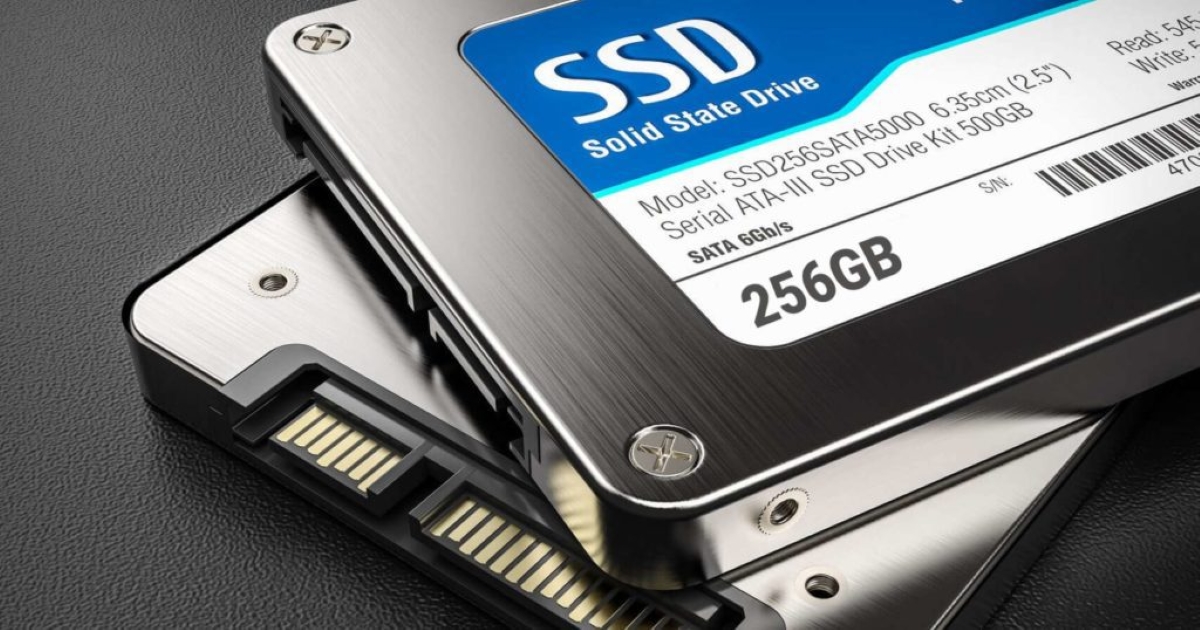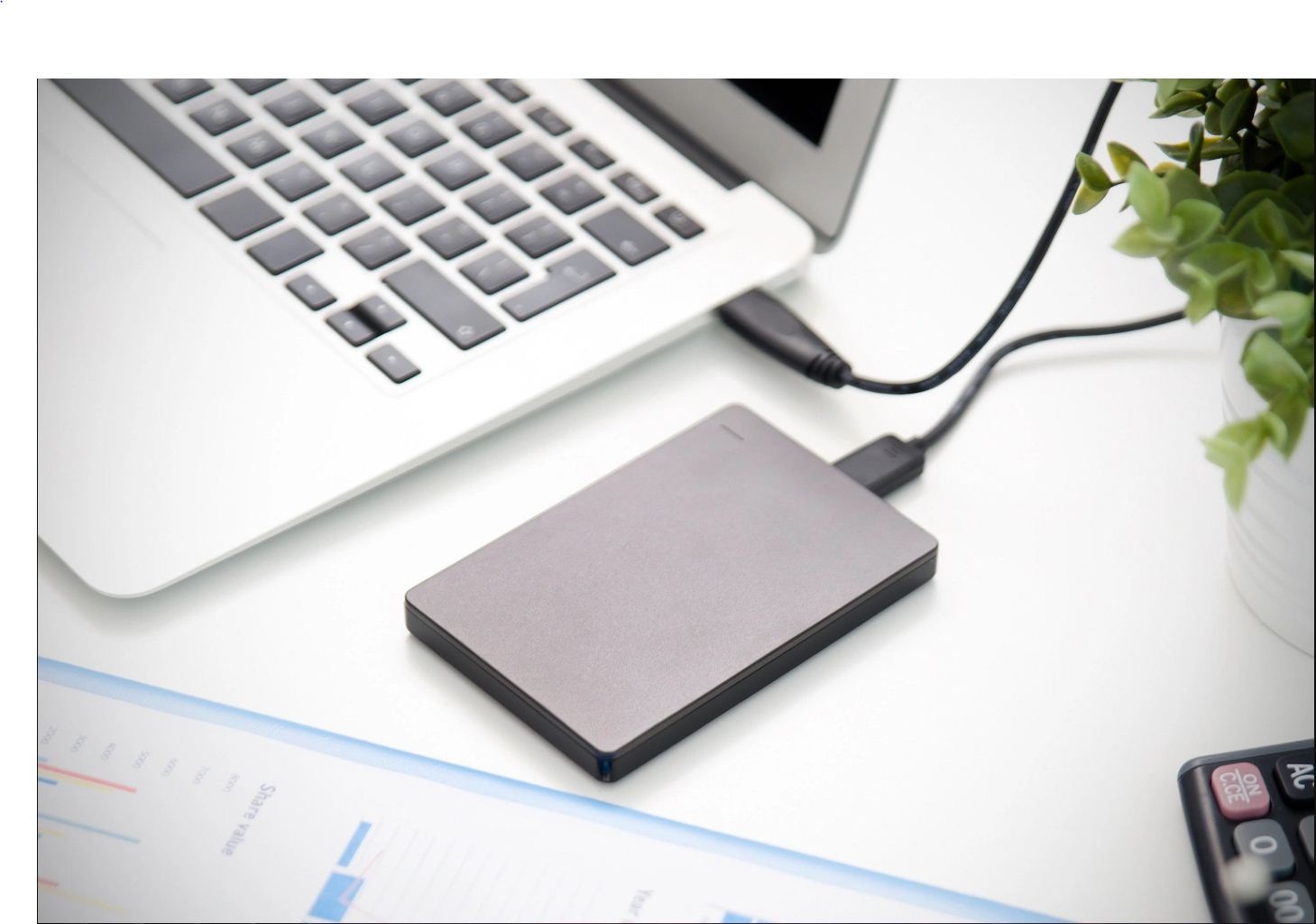

Articles
How Much Storage Is 256gb
Modified: January 23, 2024
Discover the answer to how much storage is 256GB and unlock the world of DATA STORAGE with our comprehensive guide. Don't miss out, read now!
(Many of the links in this article redirect to a specific reviewed product. Your purchase of these products through affiliate links helps to generate commission for Storables.com, at no extra cost. Learn more)
Introduction
With the rapid advancement of technology and the ever-increasing amount of digital content we consume and create, the need for ample storage space has become a necessity. From photos and videos to documents and applications, our digital lives have expanded exponentially, demanding larger storage capacities.
One popular storage option that many users rely on is 256GB. But what exactly does 256GB mean and how much data can it hold? In this article, we will delve into the details of 256GB storage, explore its capabilities, and discuss whether it is enough to meet your needs.
Before we dive in, it’s important to understand that storage capacity is typically measured in gigabytes (GB) or terabytes (TB). Each gigabyte represents a billion bytes, while a terabyte represents a trillion bytes. The higher the capacity, the more data you can store.
Key Takeaways:
- 256GB storage offers a versatile and cost-effective solution for storing a wide range of digital content, from photos and videos to documents and applications, catering to the needs of most users.
- While 256GB provides ample space for everyday use, users with extensive media libraries or large file sizes may need to consider higher-capacity storage options to avoid potential space constraints.
What is 256GB?
256GB refers to a storage capacity of 256 gigabytes. It is a commonly available option for various electronic devices, including smartphones, tablets, laptops, and portable hard drives. This capacity allows users to store a significant amount of data, including photos, videos, music, documents, and applications.
To put it into perspective, 256GB is equivalent to 256 billion bytes or 256,000 megabytes. This generous storage capacity provides ample space to store thousands of high-resolution photos, dozens of hours of HD videos, or a vast library of music and documents.
With 256GB, you can not only keep your essential files and applications but also have room for growth and future data storage needs. It offers a balance between capacity and affordability, making it a popular choice for both casual users and professionals.
It’s important to note that while 256GB is a significant amount of storage, it might not be the highest capacity available on the market. Some devices offer even larger storage options, such as 512GB, 1TB, or more. However, 256GB remains a widely used and practical choice for most users due to its reasonable cost and ample space for everyday needs.
Storage Capacity Breakdown
When it comes to storage capacity breakdown, it’s essential to understand how your 256GB is divided among different types of data and system files. Here’s a general breakdown to give you an idea:
- Operating System: Your device’s operating system takes up a portion of the storage space. This includes the core files, user interface elements, and system updates. The size can vary depending on the operating system and device. On average, it may consume around 10-15% of the total storage, leaving you with around 217-230GB of usable space.
- Pre-installed Apps and Bloatware: Many devices come with pre-installed applications and bloatware from manufacturers and carriers. These apps can take up a significant amount of storage space, ranging from a few hundred megabytes to several gigabytes. While some apps are essential, others may be unnecessary for your needs and can be uninstalled to free up storage.
- User Files: This category includes your personal files such as photos, videos, documents, and music. The amount of space these files occupy varies greatly depending on your usage. High-resolution photos and videos, for example, can consume more space compared to text documents or songs. It’s important to regularly manage and organize these files to make the most of your storage capacity.
- Applications: As technology advances, applications become more feature-rich and larger in size. Popular apps, especially games and multimedia-intensive ones, can consume significant storage space. Depending on your usage, the amount of space allocated to apps can range from a few gigabytes to tens of gigabytes.
- Cache and Temporary Files: Applications often generate cache and temporary files to improve performance and enhance user experience. These files can accumulate over time and occupy a portion of your storage. Clearing cache and temporary files periodically can help free up some space.
Keep in mind that the above breakdown is a general overview and can vary based on the specific device and operating system. It’s always a good idea to check your device’s storage settings to get a more accurate breakdown of how your 256GB is being utilized.
Comparing 256GB to Other Storage Options
When considering storage options, it’s important to understand how 256GB compares to other available capacities. Here’s a comparison with common storage options:
- 128GB: 256GB offers twice the storage capacity of 128GB. This means you can store more files, applications, and media without worrying about running out of space.
- 512GB: While 512GB provides double the storage capacity of 256GB, it may come at a higher cost. 256GB remains a popular and cost-effective choice for many users, offering a good balance between capacity and affordability.
- 1TB: 1 terabyte (TB) is four times the capacity of 256GB. If you have an extensive collection of large files, such as high-resolution videos or a massive music library, 1TB might be more suitable. However, it’s worth noting that 1TB storage options are often found in larger devices like desktop computers and external hard drives.
- Cloud Storage: Cloud storage provides a convenient alternative to physical storage devices. Services like Google Drive, Dropbox, and iCloud allow you to store files and access them from multiple devices. While cloud storage can offer virtually unlimited space, it depends on an internet connection and may involve subscription fees.
Ultimately, the storage capacity you need depends on your usage patterns, the types of files you work with, and your budget. 256GB is a versatile option for many users, offering sufficient space for a variety of applications and multimedia content without being overly expensive.
Remember that you can also supplement your device’s storage with external options like microSD cards or external hard drives, giving you additional space when needed.
How Much Data Can 256GB Hold?
The storage capacity of 256GB allows for the storage of a significant amount of data across various file types. Here’s an estimate of how much data you can typically store in 256GB:
- Photos: The number of photos you can store depends on various factors, such as the resolution and file format. On average, with a 12-megapixel camera and JPEG format, you can store around 64,000 photos. If you shoot in RAW format or higher resolutions, the number of photos will be lower.
- Videos: Video files are larger compared to photos, especially if recorded in higher resolutions like 4K. With 256GB, you can store approximately 40-60 hours of Full HD (1080p) video or around 10-15 hours of 4K footage.
- Music: The amount of music you can store depends on the audio quality and file format. With an average file size of 4MB per song, you can fit roughly 64,000 songs in 256GB, assuming an average song length of 3 minutes.
- Documents: Text-based documents, such as Word files or PDFs, have relatively small file sizes. With 256GB, you can store hundreds of thousands of documents, depending on their length and complexity.
- Applications: Applications vary in size and can range anywhere from a couple of megabytes to several gigabytes. On average, you can store a significant number of applications, including games and productivity tools, without worrying about running out of space.
It’s important to note that these estimates are rough guidelines, and actual file sizes can vary depending on factors such as compression, encoding, and the specific file format used. Additionally, it’s worth considering that your device’s operating system and pre-installed applications will also occupy some of the storage space.
If you find yourself nearing the storage capacity, you can always manage your files by deleting unnecessary data, transferring files to external storage devices, or utilizing cloud storage services to free up space.
Read more: How Much Is A Storage Shed
Factors Affecting Storage Capacity
While 256GB provides ample storage capacity, it’s important to consider various factors that can affect how much data you can actually store. Here are some key factors that can impact storage capacity:
- File Size: The size of individual files greatly influences the number of files you can store. Larger files, such as high-resolution photos or videos, will take up more space compared to smaller files like text documents or low-resolution images.
- File Format: Different file formats have varying degrees of compression, which affects their size. For example, JPEG photos are generally smaller in size compared to RAW image files. Similarly, compressed video formats like MP4 take up less space compared to less compressed formats.
- Compression and Compression Ratio: Some files can be compressed to reduce their size without losing too much quality. Files that are already compressed, such as ZIP archives or MP3 audio files, cannot be further compressed significantly. Compression ratio plays a role in determining how much space can be saved.
- Operating System and Pre-installed Apps: Your device’s operating system and pre-installed applications consume a portion of the storage capacity. The size of the operating system and bundled apps can vary depending on the device and operating system version.
- Media Quality and Resolution: High-quality and high-resolution media files, such as Ultra HD videos or lossless audio files, occupy more space compared to lower quality counterparts. If you frequently work with large media files, you may need to consider higher storage capacities.
- App and Data Updates: Apps and operating systems often receive regular updates to add new features and security patches. These updates can consume additional storage space over time.
- Redundant and Temporary Files: Temporary files, caches, and unnecessary data accumulated by applications can take up space on your device. Regularly cleaning up these files can free up storage and maximize available space.
It’s important to be mindful of these factors when considering storage needs and estimating how much data your 256GB space can hold. Additionally, managing and optimizing storage regularly can help ensure you are using the available space efficiently and avoid running out of storage capacity when you need it most.
Practical Applications of 256GB
The 256GB storage capacity offers a wide range of practical applications across various devices and use cases. Here are some examples of how 256GB can be utilized:
- Media Storage: With 256GB, you can store a vast collection of photos, videos, and music. This is especially useful for photographers, videographers, and music enthusiasts who need ample space to store their creative work.
- Portable Entertainment: 256GB allows you to carry a significant amount of movies, TV shows, and videos on your tablet or smartphone. It’s perfect for long flights or road trips, where you can enjoy your favorite entertainment without the need for an internet connection.
- Work and Productivity: Professionals who rely on their devices for work can benefit from 256GB storage capacity. It provides enough room to store documents, presentations, spreadsheets, and other work-related files, ensuring easy access and collaboration on the go.
- Gaming: Gaming enthusiasts can take advantage of 256GB to store a collection of games on their consoles or gaming PCs. This allows for quick access to a library of games without the need for frequent installations or downloads.
- Education and Learning: Students and lifelong learners can store a vast array of ebooks, digital courses, educational videos, and reference materials on their devices. 256GB ensures that you have ample space to enhance your knowledge and access educational resources anytime, anywhere.
- Professional Applications: Professionals in creative fields, such as graphic designers, architects, or video editors, can benefit from the extra storage for their computing needs. 256GB provides sufficient space to store large project files, software, and creative assets without compromising performance.
- Backup and Archive: 256GB can serve as a secondary storage option for backing up important files, documents, and media from your primary device. It provides peace of mind knowing you have a secure copy of your data in case of device failure or accidental deletion.
These are just a few examples of the practical applications of 256GB storage. The versatility and ample space it offers make it a valuable asset for individuals across various personal and professional domains.
Remember, the specific uses and applications may vary depending on your needs and the device you are using. It’s always wise to assess your storage requirements and align them with the capabilities of 256GB to ensure it meets your specific needs.
256GB of storage is equivalent to approximately 256,000 megabytes. This amount of storage can hold around 64,000 high-resolution photos, 320 hours of HD video, or 60,000 songs.
Is 256GB Enough for Your Needs?
Whether 256GB is enough for your needs largely depends on your usage patterns, the types of files you work with, and your personal preferences. Here are some factors to consider when determining if 256GB is sufficient:
- File Types: Consider the types of files you regularly use. If you primarily work with text-based documents, spreadsheets, or small-sized files, 256GB will likely be more than enough. However, if you frequently deal with large media files such as high-resolution photos or videos, you may need a higher storage capacity.
- Usage Habits: Assess how you use your device and the amount of data you typically generate or consume. If you’re a heavy user who often needs to store large media libraries, install resource-intensive applications, or work with demanding software, you may find that 256GB fills up quickly. On the other hand, if your usage is more casual and centered around basic tasks, 256GB should be sufficient.
- Cloud Storage and External Options: If you heavily rely on cloud storage services or external storage options like microSD cards or external hard drives, 256GB may be more than enough. These solutions can help offload some of your data and free up space on your device.
- Managing and Organizing Files: Efficiently managing your files, regularly deleting unnecessary data, and making use of file compression techniques can maximize the available storage space. If you are diligent in maintaining a well-organized file system, you may find that 256GB meets your needs effectively.
- Future Expansion: Consider your future requirements as well. If you anticipate your storage needs growing over time, it may be prudent to opt for a higher capacity device from the start. This can prevent the need for frequent data management or upgrading to a larger storage option later on.
Keep in mind that devices with 256GB of storage often offer additional features such as cloud syncing, easy transfer and backup options, and the ability to customize storage settings to suit your needs. These features can help maximize the available space and ease the management of your data.
In the end, the decision of whether 256GB is enough for your needs depends on careful consideration of your specific requirements, usage habits, and available alternatives. Assess your storage needs realistically and choose a capacity that aligns with your requirements now and in the foreseeable future.
Strategies for Managing Storage Space
Managing storage space is crucial to ensure that you can make the most of your 256GB capacity. Here are some strategies to help you effectively manage and optimize your storage:
- Regularly Review and Delete Unnecessary Data: Take the time to review your files and delete any data that is no longer needed. This includes old photos, videos, documents, and applications that are no longer relevant or in use.
- Utilize Cloud Storage: Take advantage of cloud storage services like Google Drive, Dropbox, or iCloud to offload files and free up space on your device. Move infrequently used files or backup duplicates to the cloud for easy access when needed.
- Transfer Files to External Storage: Utilize external storage options such as microSD cards, USB flash drives, or external hard drives to store files that you don’t need immediate access to. This helps declutter your device’s internal storage.
- Optimize File Compression: Compress large files or folders to save space without sacrificing too much quality. Many file formats and tools allow for compression, such as ZIP for documents and images, or video codecs for videos.
- Clear Cache and Temporary Files: Periodically clear cache and temporary files generated by applications. These files can accumulate over time and take up precious storage space. Most devices have settings to clear the cache or can use cleaning apps for this purpose.
- Stream and Download Media: Instead of storing your entire media library locally, consider streaming music and videos from online platforms like Spotify, Netflix, or YouTube. This reduces the need to store large media files on your device.
- Manage App Data and Downloads: Be mindful of app data and downloads. Some apps use a significant amount of storage for cache, data, and offline content. Regularly delete unnecessary app data or manage download preferences to prevent excessive storage usage.
- Use Storage Management Tools: Take advantage of built-in storage management tools or third-party apps that provide insights into storage usage. These tools can help identify large files, duplicate files, and offer suggestions on how to optimize your storage space.
- Prune and Organize Folders: Keep your files organized by creating folders and subfolders. This makes it easier to locate specific files and avoids clutter. Regularly review and reorganize your folders to ensure efficient use of space.
By implementing these strategies, you can effectively manage your 256GB storage space and avoid running out of capacity when you need it most. Regularly assess your storage usage, declutter unnecessary data, and make use of external storage and cloud options to optimize your available space.
Read more: How Much Is 2 Tb Of Storage
Advantages and Disadvantages of 256GB Storage
256GB storage offers several advantages and disadvantages that are important to consider when evaluating its suitability for your needs. Let’s explore the advantages and disadvantages of 256GB storage:
Advantages:
- Ample Space: 256GB provides a generous amount of storage space to store a variety of files, including photos, videos, music, documents, and applications.
- Versatility: 256GB is a versatile option that can meet the needs of different users, from casual users to professionals who require ample storage for their work-related files.
- Cost-Effective: 256GB strikes a good balance between storage capacity and affordability. It offers a reasonable amount of space without significantly increasing the cost of the device or storage option.
- Portable: Devices with 256GB storage capacity are generally portable, allowing you to carry a significant amount of data with you wherever you go.
- Reduced Dependence on Cloud Storage: With 256GB, you can store a substantial amount of data locally, reducing the need to rely heavily on cloud storage services. This can be beneficial for those with limited or unreliable internet connectivity.
- Convenience and Instant Access: Having sufficient storage space allows you to access your files quickly without relying on external devices or waiting for downloads or uploads.
Disadvantages:
- Storage Limitations: While 256GB is ample storage for most users, it may not be sufficient for those with extensive media libraries, large file sizes, or intensive storage needs. Users with these requirements may need to consider higher-capacity options.
- Potential for Space Constraints: As technology advances and file sizes increase, you may find that your 256GB storage space fills up more quickly than anticipated. This can require regular file management and potential reliance on external storage solutions.
- Limited Upgrade Options: Depending on the device or storage option, upgrading the storage capacity may not be possible or may come at an additional cost. It’s crucial to consider future expansion needs when selecting a device with 256GB storage.
- Storage Allocation: The actual usable storage may be slightly lower than the advertised capacity due to the pre-installed operating system and other system files. This can reduce the available space for user data and applications.
- Risk of Data Loss: While 256GB can provide ample space, it’s important to have a backup plan in case of device failure, theft, or accidental deletion. Regular backups are essential to prevent the loss of valuable data.
Considering these advantages and disadvantages will help you decide if 256GB storage meets your specific needs. Evaluate your usage patterns, required file sizes, and future expansion requirements to make an informed decision about the most suitable storage capacity for your needs.
Conclusion
In today’s digital age, storage capacity plays a crucial role in our daily lives. 256GB storage offers a versatile and practical option for many users, providing ample space to store photos, videos, music, documents, and applications. However, determining if 256GB is enough for your needs depends on multiple factors, such as the types of files you work with, your usage habits, and future expansion requirements.
The advantages of 256GB storage include its versatility, cost-effectiveness, and convenience. It offers ample space for most users while remaining portable and reducing dependence on cloud storage. With 256GB, you can enjoy easy access to your files and enjoy a diverse range of applications and multimedia content.
On the other hand, the limitation of 256GB storage lies in its potential for space constraints, especially for users with extensive media libraries or large file sizes. It’s important to regularly review and manage your files, make use of external storage options, and consider future expansion needs to ensure optimal utilization of your storage capacity.
Ultimately, whether 256GB is sufficient for your needs depends on a careful assessment of your specific requirements. Consider the types of files you work with, your usage habits, and the potential for future growth. If you find that 256GB falls short, there are alternatives available with higher capacities to meet your storage needs.
In conclusion, 256GB storage provides a valuable balance between capacity and affordability. It can meet the needs of a wide range of users, from casual everyday users to professionals in need of storage for work-related files. By effectively managing your data, utilizing external storage options when necessary, and making the most of your available space, 256GB can be an efficient and convenient solution to store and access your digital content.
Frequently Asked Questions about How Much Storage Is 256gb
Was this page helpful?
At Storables.com, we guarantee accurate and reliable information. Our content, validated by Expert Board Contributors, is crafted following stringent Editorial Policies. We're committed to providing you with well-researched, expert-backed insights for all your informational needs.














0 thoughts on “How Much Storage Is 256gb”